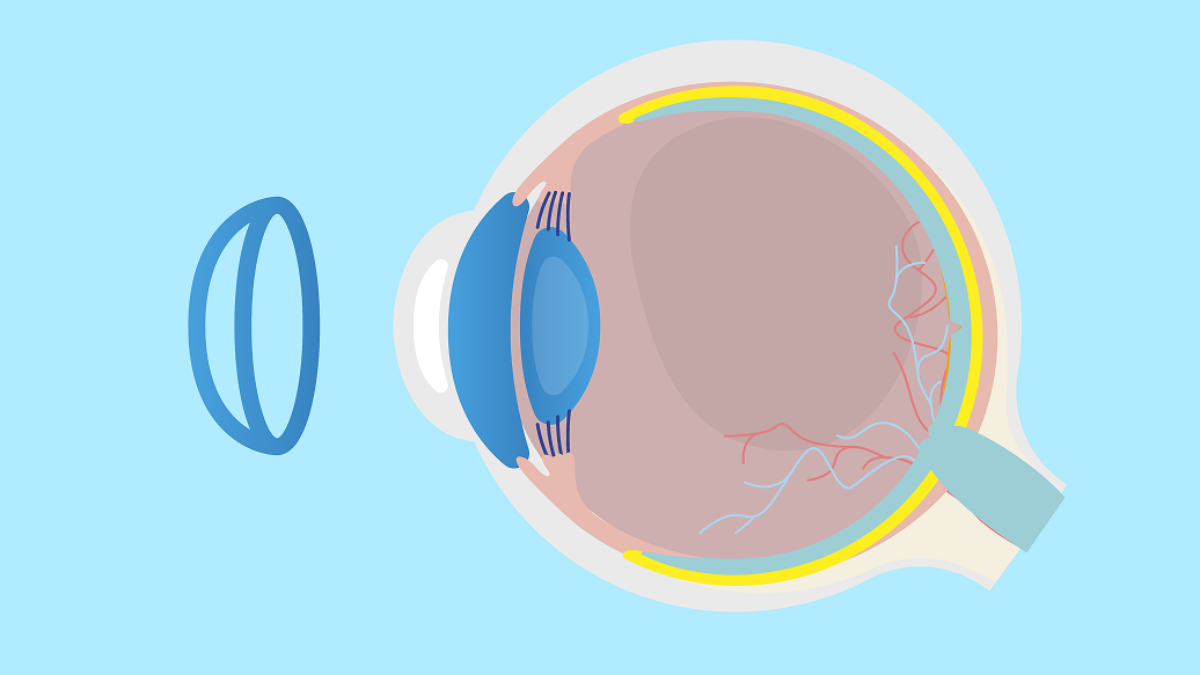A University of Houston study links lens use to biological changes that reduce axial length elongation.
What’s going on behind the lens? A new report from the University of Houston College of Optometry adds a key piece to the myopia control puzzle, showing that high-add multifocal contact lenses not only slow the progression of nearsightedness in children but also trigger subtle anatomical changes that could explain why.1
The study, published in Investigative Ophthalmology & Visual Science, is the latest analysis from the BLINK and BLINK2 studies, a multi-year clinical project funded by the National Eye Institute. Led by Dr. David Berntsen, Golden-Golden Professor of Optometry and chair of Clinical Sciences at the University of Houston and his collaborators at Ohio State University, the research tracks how different lens types affect eye growth in myopic children.
READ MORE: Study Finds Multifocal Rigid Gas Permeable Contact Lenses Help Slow Myopia in Teens
A closer look at the choroid
The star of this latest update isn’t the cornea or the retina, but the choroid, the vascular middle layer sandwiched between them that’s quietly nourishing the retina and playing an increasingly suspicious role in myopia progression.
In the BLINK study, children wearing high-add (+2.50 D) multifocal contact lenses showed a measurable increase in subfoveal choroidal thickness and area just two weeks into treatment.1 And, according to co-author Dr. David Berntsen, that thickness difference “was maintained throughout the three-year study”.
Why does that matter? In myopia, the eye grows too long from front to back, causing light to focus in front of the retina instead of on it. A thicker choroid could be signaling a slowdown in that axial stretch, which is good news for long-term visual outcomes.
READ MORE: European Approval for Sydnexis’ Pediatric Myopia Treatment
BLINK and you’ll miss it? Not quite
The BLINK (Bifocal Lenses In Nearsighted Kids) study and its sequel, BLINK2, included 281 children between 7 and 11 years old. Participants were randomly assigned to wear either single vision lenses or multifocal lenses with different add powers. The team then measured subfoveal choroidal thickness and area over time.1
From the start, the high-add multifocal lens group stood out. After just two weeks of wear, those kids showed an average increase in choroidal thickness of 8 microns and a 0.07 mm² increase in choroidal area, an effect that persisted across all three years of follow-up.1
Berntsen’s team also found a meaningful link between early thickening and slower eye growth. Children who showed an increase in choroidal thickness at two weeks were more likely to have less axial elongation over the long haul. In fact, kids in the high-add group had 0.23 mm less axial elongation over three years than their peers in single-vision lenses.1

READ MORE: WSPOS Myopia Consensus Statement 2025: What Practitioners Need to Know
“While there were no changes in choroidal thickness or area in the single vision group, eyes in the high-add multifocal contact lens group that grew less maintained a slightly thicker choroid throughout the three years of multifocal lens wear,” said Berntsen.
The initial choroidal thickening seen after just two weeks could explain roughly 20-29% of the reduced axial elongation in the +2.50 D group. While not the sole mechanism, this change is a measurable contributor to reduced axial elongation.1
Regional differences matter
The research revealed interesting patterns across different areas of the eye. The superior, inferior, and temporal quadrants of the choroid thickened with high-add lens wear, while the nasal side near the optic nerve stayed stable. These regional differences align with previous findings and anatomical expectations.1
Interestingly, the +1.50 D multifocal group didn’t show the same benefits. Their choroids stayed about the same thickness, as did their rate of eye growth. When it comes to myopia control, it seems not all multifocals are created equal.1
Key takeaways from the BLINK studies
- Children wearing high-add power multifocal lenses had increased choroidal thickness and area
- This increase was apparent after two weeks and sustained for three years
- Eyes that thickened early were less likely to elongate significantly over time
- No such changes were seen in the single vision contact lens group
READ MORE: Sydnexis Receives FDA Acceptance for SYD-101 NDA for Pediatric Myopia
The bottom line for clinicians
With childhood myopia rates rising globally (affecting 35% of children currently and projected to reach 40% by 2050), the need for effective, evidence-based interventions has never been clearer. These new findings give practitioners one more way to explain how multifocal lenses work, not just optically, but anatomically.
The BLINK study reinforces that early, measurable changes in the eye’s structure can be linked to long-term benefits—a recurring theme in myopia control. For the choroid, it seems, thicker might just be better. And for clinicians battling the rising tide of childhood myopia, that’s one more tool in the treatment toolkit.
Editorial Note: Read the full University of Houston College of Optometry press release here. This content is intended exclusively for healthcare professionals. It is not intended for the general public. Products or therapies discussed may not be registered or approved in all jurisdictions, including Singapore.
Reference
- Walker MK, Berntsen DA, Robich ML, et al. Three-year change in subfoveal choroidal thickness and area with multifocal contact lens wear in the Bifocal Lenses in Nearsighted Kids (BLINK) study. Invest Ophthalmol Vis Sci. 2025;66(5):5.



